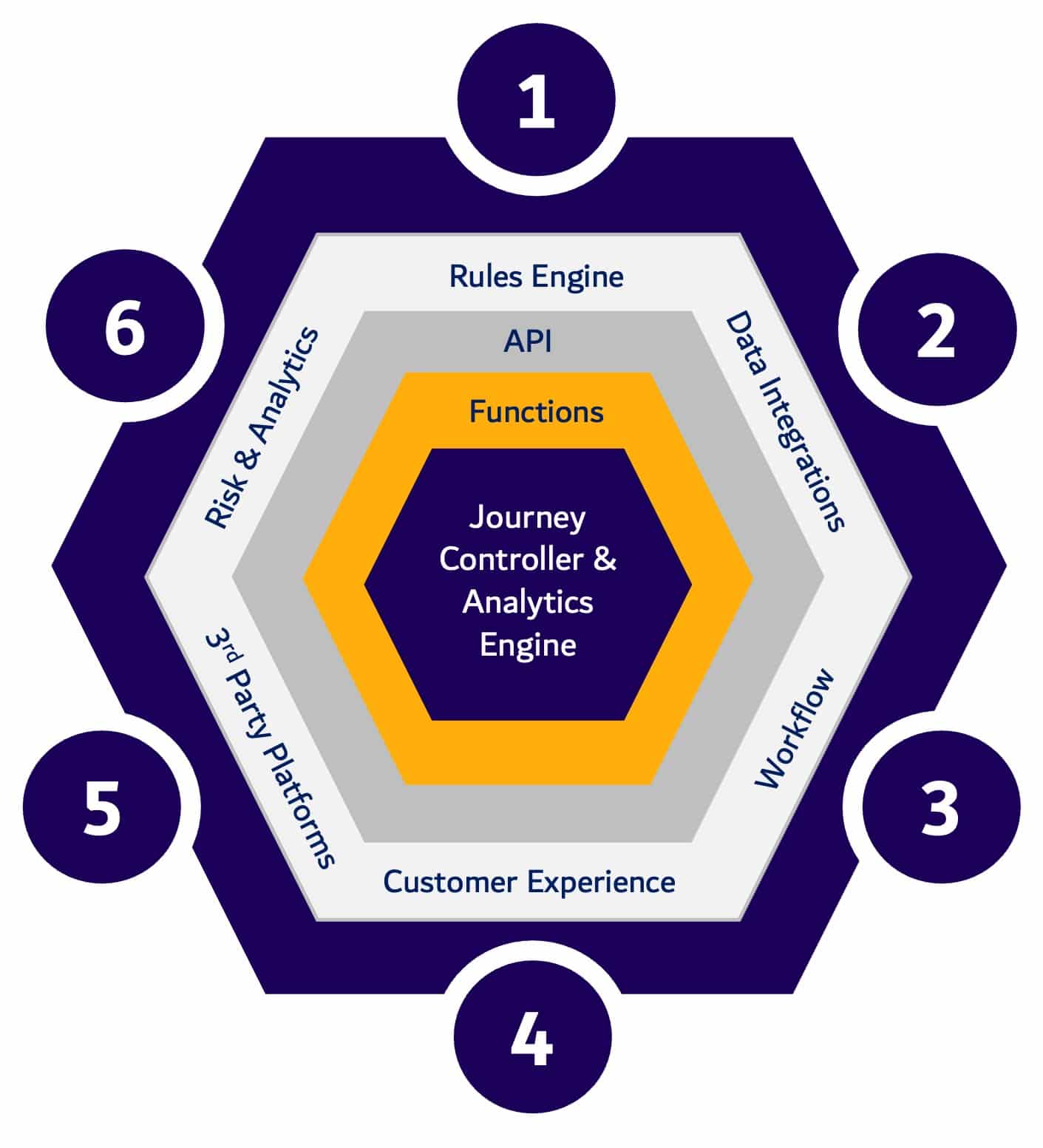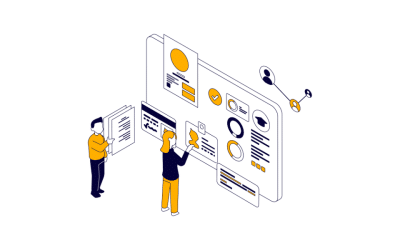Digital Transformation (DX) has been a hot topic in business for almost a decade. With the introduction of the PrinSIX DX platform, the topic receives a welcome shot in the arm, offering businesses the opportunity to accelerate programs and remove the risks and challenges of self-authoring home-grown systems. This article investigates a new generation of Digital Transformation platform technology.
Why businesses need to transform digitally
Many businesses have yet to catch up with the expectations of today’s always-online customers.
For example, approaches to customer onboarding often take the form of a one-size-fits-all process that shoehorns all customers on a journey to ask questions about their applications, whether they’re relevant or not.
It’s also common for the decisioning process—to determine how to serve customers—to be largely offline, and unconnected from applications workflows logic, rather than embedding decisioning into customer journeys to create ‘listening’ systems that can adapt to the personal circumstances and requirements of the applicant.
In the consumer finance sector, another opportunity that often goes unused is the use of Open Banking data to drive simpler applications processes. Integrations with 3rd party data, and absorbing data and 3rd party tools into processes, are for most IT teams just one more job to get around to later.
Today’s business challenges that digital transformation was born to solve:
- Relentless demands for digital channels
- Escalating expectations in customer experience
- Growing need to understand customer circumstances
- Accelerating the pace of change and innovation
- Declining operational efficiency and capacity
- Mounting regulatory intervention
The consequences of sub-optimal digital solutions
Failing to leverage the benefits of digital transformation is not a victimless crime for a modern business.
It causes organisations to struggle to balance commercial opportunity with compliance risk. Businesses risk failing to meet their compliance obligations because they are unable to treat customers fairly and individually. It limits their capability to recognise the financial vulnerability and affordability challenges applicants face.
Furthermore, the absence of digital tooling places more pressure on IT to serve up technology solutions and leads to an increase in headcount in areas of the business like customer service, and operations owing to a reliance on the human-in-the-loop.
The consequences of missing out on Digital Transformation include:
- Declining customer experiences
- Extending time to serve
- Growing operational cost
- Declining operational capacity
- Falling customer acquisition and retention
- Growing technical backlogs
- Declining customer insights
- Escalating compliance and commercial risk
- Increased opportunity cost
Digital Transformation shortcomings
Harnessing digital technologies to bring new customer value and streamline processes is top of the priority list for CIOs around the world seeking to maximise commercial effectiveness. Digital engagement starts with the customer and serving them quickly easily and efficiently is the key to success.
A major complication of digital transformation for business leaders has been the absence of a ready-to-use technology platform, to simplify the adoption of new ideas.
In an era of everything-as-a-service, digital transformation has been far from that. Digital project leaders have found themselves forced to glue together various technology building blocks to service their business needs. Then, just to add further hassle and complexity, this toolset has then to be embellished with threads of integrations between third-party data, tools, incumbent Systems of Record, etc.
There has to be a better solution.
Actionable Digital Transformation Platforms
The logical evolution of digital transformation in the enterprise is to stop relying on disparate building blocks of technology to warp and weft together the technical toolset needed to implement changes to your business systems, processes and operations.
The alternative is a digital platform that displaces the need for coding, scripting, integrations, etc. with a ready-to-use ‘configure not code’ solution.
PrinSIX is one such platform. It combines SIX elements of customer onboarding and service automation to create optimal ‘listening’ digital customer workflows which includes:
- Customer Experience
- Data Integrations
- Workflow
- Rules & Decisions
- 3rd Party Platforms
- Risk & Analysis

Out-of-the-box, the PrinSIX Actionable Digital Transformation Platform is a ready-to-use DX toolkit that can be implemented in a matter of weeks to start seeing immediate results from their digital transformation investment.
PrinSIX allows organisations to treat applicants as individuals, with digital conversations that listen and adapt as more is learnt about customer needs. Conversations are orchestrated quickly, and are simple to refine because they are can be configured by the business, not the development team.
Benefits include:
Operations
⇡ Self-service
⇣ Cost to serve
⇣ Manual procedures
⇡ High-value clients
Delivery
⇣ Cost
⇡ Quality
⇡ Speed
⇣ Risk
Marketing
⇡ Conversion
⇣ Cost of acquisition
⇡ Customer satisfaction
⇡ Customer value
Risk
⇣ Compliance
⇡ Oversight
⇡ Customer insight
⇣ Business impact


